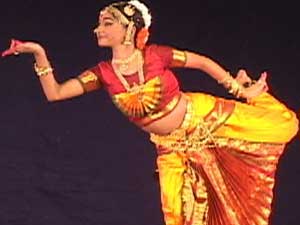Just In
- 13 hrs ago

- 14 hrs ago

- 17 hrs ago

- 17 hrs ago

Don't Miss
- Sports
 Who Won Yesterday's IPL Match 41? SRH vs RCB, IPL 2024 on April 25: Royal Challengers Bangalore End Losing Streak
Who Won Yesterday's IPL Match 41? SRH vs RCB, IPL 2024 on April 25: Royal Challengers Bangalore End Losing Streak - Finance
 Bajaj Group Stock Declares Rs. 60/Share Dividend: Buy Ahead of Record Date On 28 June?
Bajaj Group Stock Declares Rs. 60/Share Dividend: Buy Ahead of Record Date On 28 June? - Movies
 TRP Report Week 16: Anupamaa, Jhanak BEAT Yeh Rishta Kya Kehlata Hai, Ghum Hai. Top 10 Shows List
TRP Report Week 16: Anupamaa, Jhanak BEAT Yeh Rishta Kya Kehlata Hai, Ghum Hai. Top 10 Shows List - News
 MEA Dismisses US Human Rights Report On Manipur As 'Biased And Misinformed'
MEA Dismisses US Human Rights Report On Manipur As 'Biased And Misinformed' - Automobiles
 Royal Enfield Unveils Revolutionary Rentals & Tours Service: Check Out All Details Here
Royal Enfield Unveils Revolutionary Rentals & Tours Service: Check Out All Details Here - Technology
 Elon Musk’s X Is Launching a TV App Similar to YouTube for Watching Videos
Elon Musk’s X Is Launching a TV App Similar to YouTube for Watching Videos - Education
 AICTE introduces career portal for 3 million students, offering fully-sponsored trip to Silicon Valley
AICTE introduces career portal for 3 million students, offering fully-sponsored trip to Silicon Valley - Travel
 Escape to Kalimpong, Gangtok, and Darjeeling with IRCTC's Tour Package; Check Itinerary
Escape to Kalimpong, Gangtok, and Darjeeling with IRCTC's Tour Package; Check Itinerary
Explore The Indian Classical Dance Forms

Now, after thousands of years, dance is a literature of its own and courses on learning dance forms and styles have also been coming up off late in the world. Indian classical dance like Bharatanatyam of Tamil Nadu, Kathak of Uttar Pradesh, Kathakali of Kerala and Oddisi of Orrisa to name a few are the most common danced forms which are practiced and performed nationwide. Dance is considered as the visual and physical representation of the country's ethos and traditions.
Lets have a look at the other Indian classical dance forms:
Kalaripayattu: This is Dravidian martial art from Kerala is the oldest fighting systems in existence. It is not only practiced in Kerala but also in Tamil Nadu and Karnataka. It is learned and performed in the northeastern Sri Lanka and among the malayali community of Malaysia. This Indian classical dance form includes strikes, kicks, grappling, preset forms, weaponry and healing methods.
Kummi and Kolattam: A tribal dance of women in Tamil Nadu. This Indian classical dance form is a way of celebrating festivals. Kummi is a simple dance form where the 8-40 women make circles and clap as they dance. In Kolattam as the name suggests kola (a small stick) and attam (play), wooden rods are used while dancing. It is also known as stick dance, kolannalu or kolkolannalu in various parts of the country.
Tandava: In Hindu Mythology, tandava is a dance form performed by Lord Shiva. Also known as Shiva Tandava, this dance form is a source depicting the cycle of creation, preservation and dissolution. The term has been derived from tandu, attendant of Shiva. Tandava are of two types namely: Rudra Tandava which depicts Shiva's violent nature( as creator and destructor) and Ananda Tandava which shows him as the enjoyer of his own creation. Lord Shiva as Nataraja (Lord of Dance), is considered as the supreme lord of dance.
Kuchipudi: An Indian classical dance form originally from Madhya Pradesh but also practiced in Suthern states is performed on classical karnatic music. It shares many common elements of Bharatanatyam and its dancers are quicksilver, scintillating, rounded and fleet-footed. The numbers include jatiswaram and tillana which reflect the desire of a devotee to merge with God.
Ghoomer: It is a traditional fork dance of women in Rajasthan. It is performed by groups of women in swirling robes accompanied by men who play musical instruments while singing. The name was derived from Ghoomna (taking rounds) which display the spectacular colors of flowing ghaghara (long skirts) of women. Women twirl in circles while their face is covered with the help of the veil.
There are many other Indian classical dance forms which are practiced nationwide. Dance is a way of expressing the emotions like happiness, sadness, anger, fear etc.
-
 diet fitnessNora Fatehi Fitness Tips: 4 Lessons From The Dancing Diva!
diet fitnessNora Fatehi Fitness Tips: 4 Lessons From The Dancing Diva! -
 diabetesBest Exercises For People With Diabetes
diabetesBest Exercises For People With Diabetes -
 wellnessBest Ways To Boost Your Metabolism
wellnessBest Ways To Boost Your Metabolism -
 pulseTap & Dance For The National Tap Dance Day
pulseTap & Dance For The National Tap Dance Day -
 insyncPamela Anderson Reveals Her Dream Role
insyncPamela Anderson Reveals Her Dream Role -
 insyncSharon Osbourne Finally Discovers The Art Of Texting
insyncSharon Osbourne Finally Discovers The Art Of Texting -
 insyncWhat Queen Victoria's Self-Portrait Reveals?
insyncWhat Queen Victoria's Self-Portrait Reveals? -
 insync'Idea Nachke Dikha' Rocks Hyderabad
insync'Idea Nachke Dikha' Rocks Hyderabad -
 insyncMichael Danced For Hours To Beat Insomnia
insyncMichael Danced For Hours To Beat Insomnia -
 kidsBallroom Dancing For The Kids!
kidsBallroom Dancing For The Kids! -
 art cultureBook review: 'Never Out Of Print: The Rupa Story; The Journey Of An Independent Indian Publisher
art cultureBook review: 'Never Out Of Print: The Rupa Story; The Journey Of An Independent Indian Publisher -
 insyncSome Things That You Can Experience Only In South India That Are Synonymous With Coolest Adventures
insyncSome Things That You Can Experience Only In South India That Are Synonymous With Coolest Adventures


 Click it and Unblock the Notifications
Click it and Unblock the Notifications



